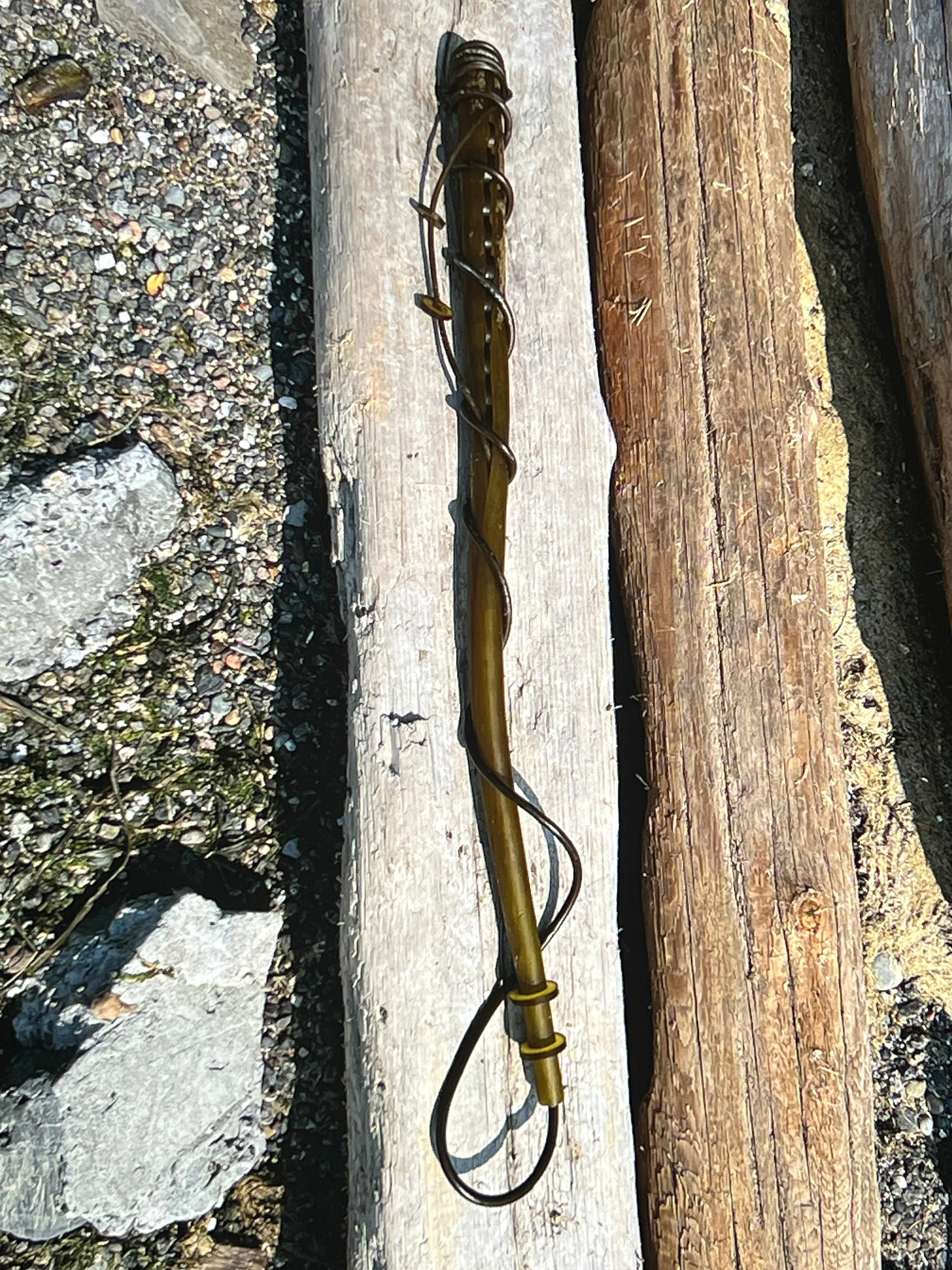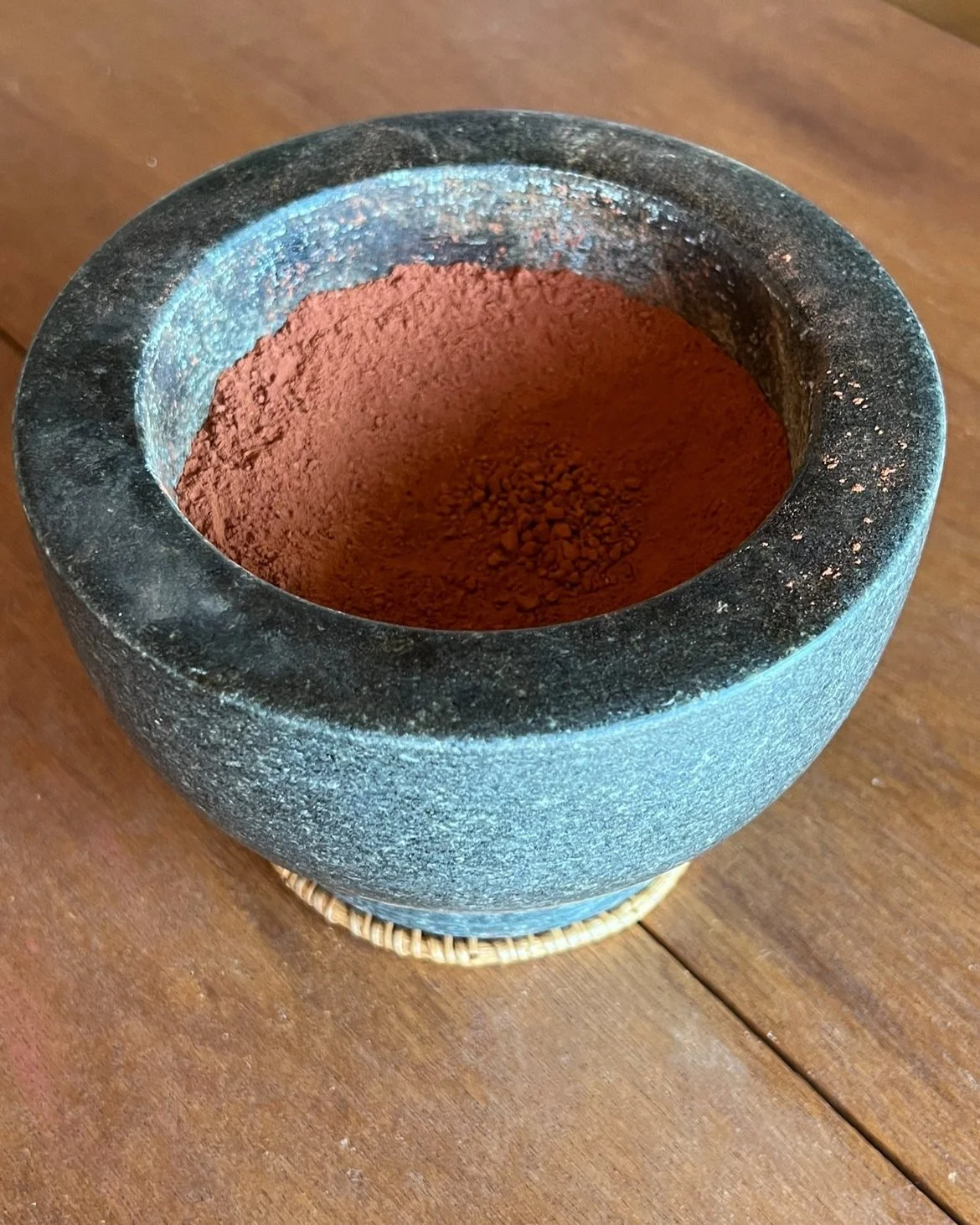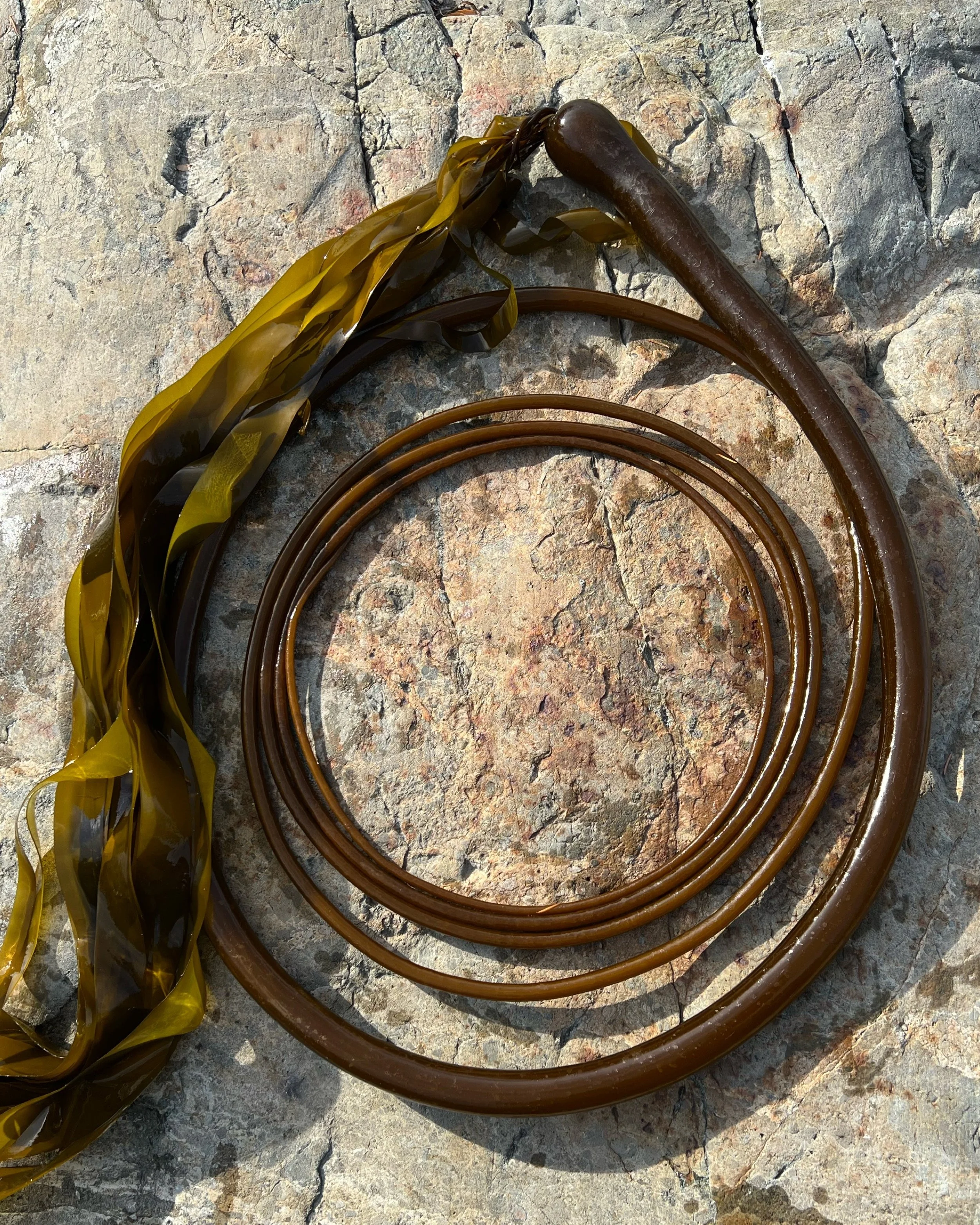Each of my assemblages in this exhibit—Votive, Urn, Tree, and Nest—were composed of remnants of organic and human-made materials that tidal currents carried to the beach near our cabin. I temporarily joined these damaged things “into something whole” for a brief stop at Slip Gallery for the Wild Cure exhibition on their long journeys of transformation and decay. Learn more about each piece below.
VOTIVE
Metal, driftwood, netting strands, spent bull kelp stipe and rings, pine needles & pigment
During the run of the exhibit, visitors were invited to attach a pine need pair. My nephew demonstrates in the above photo.
An upholstered chair arrived on the beach one day; tidal action quickly went to work destroying it, leaving the metal frame within. Before serving as the armature for this assemblage, the frame served as a means to display bull kelp for a photographic series of bull kelp. The fiber strands were salvaged from netting and rope that regularly wash up.
I continue to play with the creative possibilities of bull kelp, pushing the limits of working with decaying material and documenting the process. I’m currently experimenting with techniques to join bull kelp rings together with the help of pine needles while attempting to weave them, too.
URN
Ceramic, rock, spent bull kelp float and stipe, quill, oyster shell, pine needles & pigment
The dried bull kelp wreath wrapped around the ceramic remnant in this assemblage was originally the kelp sculpture in the photo above. Freshly-spent bull kelp is incredibly supple and strong, which lends to a range of shapes, contortions, and precision cuts.
The pigment is ground from the ubiquitous ruddy orange brick shards that litter the beach. I ground the shards using a mortar and pestle. This pigment comes into play in multiple projects.
TREE
Driftwood, spent bull kelp blades and stipe, concrete column, bark, pigment & stones
During the run of the exhibit, visitors were invited to drop a stone in the column.
A freshly-spent, intact bull kelp is a gift because they often arrive on shore decayed or missing their blades or holdfast. The driftwood in this assemblage was wrapped with fresh blades that subsequently dried. Coiled around the column and driftwood is a dried stipe. Learn more about bull kelp at this link.
These stones have taken many forms on the beach and join this assemblage for the exhibition. Select one that catches your eye.
NEST
Driftwood, stone, vine wreaths, netting strands, spent and dried bull kelp blades, concrete column & pigment
An unassuming stone from the beach, rubbed with pigment, takes center stage in this assemblage. Imagine the geologic journey of rocks such as this one, many of which are not native to the Pacific Northwest, but arrived here due to glacial movement thousands of years ago.
A couple of the vine wreaths in this assemblage were sourced from an installation I created during the lockdown that was subsequently destroyed in a storm after a surprising three-month run. Fortunately, the tide was generous to leave a few rings on the beach for me to repurpose.













